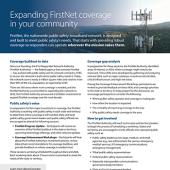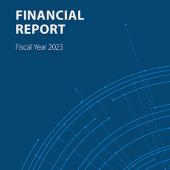Junction City EMS Uses FirstNet in Local, Regional, and National Response
Junction City Fire Department’s EMS services a rural, Midwest community in Kansas, which presents some communication challenges. To address these challenges, Junction City Fire Department uses FirstNet, whether for long distance transports to the nearest trauma facility, coordinating regional recovery efforts after a tornado, or deploying across the country to respond to a national disaster.
Using FirstNet to adapt to local needs
Junction City Fire Department’s EMS Division is using technology to advance patient care in their community. While their local hospital can provide competent initial care for STEMI (heart attack) and major trauma, it does not have the capability for the longer term definitive care of those patients. So they instituted a bypass protocol that allows them to take the patient to straight to a larger hospital, which is at least 45 miles away. When transporting a patient long distances, they rely on FirstNet to transmit data from in-ambulance monitors to the trauma center and to consult with doctors prior to arrival.
Kent Vosburg, EMS Division Chief at Junction City Fire Department, is adapting technology to fit the needs of the community. “We use our tablets as hotspots for FirstNet to send data straight to the hospitals so they can get real-time information about the patient,” he said.
One of the hospitals doesn’t have the staff to monitor a computer, so Division Chief Vosburg and his team have found a workaround—they send the data to a fax machine in the emergency room and the nursing supervisor immediately sees the report.
For their internal operations, Junction City Fire Department’s EMS Division has streamlined patient reporting using tablets and a FirstNet connection. For example, they used to print out a data strip from the cardiac monitor, run the strip through a copier, scan the copy, and then attach the file to the correct patient report. Today, vital signs and EKG data are imported directly from the monitor to an electronic patient report.
Improving regional tornado canvassing with technology
In addition to their regular work, Junction City Fire Department is part of regional search and rescue task force. When the task force responds to the aftermath of a manmade or natural disaster, they use smartphones connected to the FirstNet network and public safety applications to share data in real-time.
Before this solution, teams would walk between houses surveying damage, injuries, and hazards. Then they’d return to the base of operations to compile data and plan next steps. Today, the search and rescue teams use an app on smartphones powered by FirstNet to do the same job in real-time. So if one team surveys a bridge and determines that no trucks should cross it, then all the other teams know instantaneously and can incorporate that information into their plans.
FirstNet works nationwide
Division Chief Vosburg and his team have also benefited from the nationwide reach of FirstNet. “FirstNet really made a difference when we were part of a task force responding to Hurricane Dorian in Florida,” he said.
Using FirstNet, Division Chief Vosburg stayed in communication with his team and tracked their precise location, all from a thousand miles away. Because his team had FirstNet phones, they were able to stay connected even when commercial networks went down. At one point the team onsite was following a convoy but couldn’t determine their whereabouts because road signs were blown away by the hurricane. From Kansas, Division Chief Vosburg was able to tell the crew in Florida exactly where they were and where they were going.
“Our crews had FirstNet phones and were always able to call back, and we were always able to check in with them real-time,” he said.
Interested in learning more about how FirstNet is helping transform public safety communications? Contact your local FirstNet Authority Public Safety Advisor and sign up for our EMS quarterly newsletter.
For more information on FirstNet products and services, visit FirstNet.com.




















